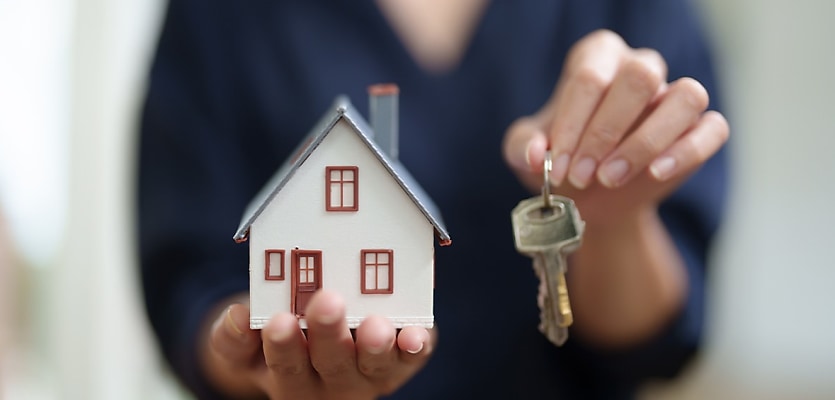As the federal election approaches, Australians and industry experts have raised concerns about potential price increases and growing unaffordability, following the major parties’ housing policies.
A recent survey of hundreds of Australians has shown that the majority of respondents oppose the Coalition’s super for housing policy due to concerns that the scheme could potentially drive up house prices nationwide.
In the survey of 740 people undertaken by the national housing campaign, Everybody’s Home, 76 per cent of respondents did not support the Coalition’s pledge to allow FHBS to access $50,000 from their superannuation for a housing deposit, if they win the upcoming 2025 federal election.
The responses also showed that three in four (75 per cent) of Australians said they were “extremely concerned” or “very concerned” that the super for housing scheme could push house prices up.
Contrastingly, less than one in four (24 per cent) of respondents said they supported the super for housing scheme.
Everybody’s Home spokesperson, Maiy Azize, said the data showed that the super for housing policy could “pour fuel to the flames of an already overheated housing market”.
She said that the survey responses described the scheme as “short-sighted, a Band-Aid fix, and a knee-jerk solution”.
“Using superannuation for housing deposits is unfair, and does nothing to build more affordable homes. Instead, it robs people of their retirement savings and drives up house prices for everyone else,” Azize said.
Azize also criticised the Labor Party’s pledge to allow all first home buyers to purchase a home with a 5 per cent deposit and build 100,000 new homes for first buyers, stating that it does not adequately address the affordability issues that are fuelling the housing crisis.
“Labor’s home deposit support for first home buyers will also add to demand. Building 100,000 homes is a good step, but they aren’t guaranteed to be affordable.”
“Australia doesn’t just need new homes, we need homes that people can actually afford,” she said.
With the 2025 federal election rapidly approaching, Azize said that the housing pledges made by the major parties fell “well short” of addressing the housing crisis and could “make it even worse”.
“In this election, Australians are seeking bold, visionary policies that will make housing affordable for everyone.”
“Parties and candidates who are vying for votes must step up and deliver the policies that will shift the dial on the housing crisis,” Azize said.
First home buyer loans catch up to broader owner-occupier market
The major parties’ increasing focus on policies targeting first-time buyers coincides with the release of industry data showing that the total number of loans to first home buyers registered a 5.9 per cent annual growth to 125,220 last year.
Property expert at Money.com.au, Mansour Soltani, said that last year’s annual growth for first home buyer (FHB) loans brought the market segment in line with the 6 per cent growth of the wider owner-occupier market.
Soltani attributed the surge in FHB loans to state grants and the First Home Guarantee, and said that the segment’s alignment with the broader home buyer market is a “major turning point”.
“First home buyers are always playing catch-up with upgrades who have equity behind them. But now, that gap is finally starting to shrink,” Soltani said.
Data also showed that more first home buyers are expected to enter the property market in 2025, with FHB loans projected to increase by 6.5 per cent to 133,308, compared to the anticipated growth of 5.3 per cent in the owner-occupier market, reaching 216,210 loans over the same period.
“With interest rates falling, we’re likely to see affordability pressures ease, borrowing power improve, and more first home buyers take their first shot at home ownership in 2025,” Soltani added.
Across the nation, Victoria recorded the highest annual growth in FHB loan numbers at 11 per cent last year, followed by Queensland at 6 per cent and South Australia at 4.6 per cent growth in FHB loan numbers for 2024.
While South Australia’s annual growth rate registered slightly below the national rate of 5.5 per cent, FHB loans now make up 34.9 per cent of all owner-occupier loans, the highest share on record in the state.
Soltani said that the high number of first home buyers who have already entered the South Australian market has caused growth to slow within the state and reduced the risk of buyer competition driving house prices up.
Nevertheless, he emphasised that there is still a wealth of opportunities for first home buyers looking to get onto the property ladder in South Australia.
“While Adelaide’s median house price recently hit the $1 million mark, there are still plenty of affordable pockets outside of the city and in regional South Australia where first home buyers can get into the market without taking on excessive debt,” Soltani said.
“The average annual loan size for first home buyers in South Australia is still below $500,000, so affordability remains a major drawcard,” he concluded.







You are not authorised to post comments.
Comments will undergo moderation before they get published.